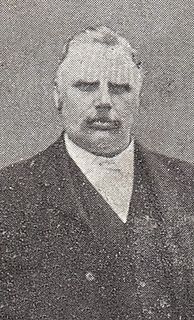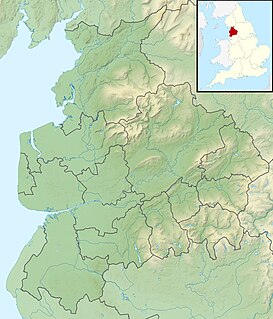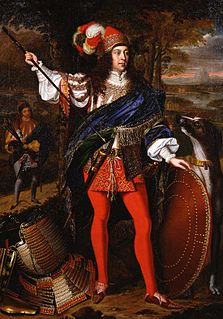Related Research Articles

William Philip Molyneux, 2nd Earl of Sefton, also known as Lord Dashalong, was a sportsman, gambler and a friend of the Prince Regent.

Earl of Sefton was a title in the Peerage of Ireland created in 1771 for the 8th Viscount Molyneux. The Earls of Sefton held the subsidiary titles Viscount Molyneux, of Maryborough in the Queen's County, in the Peerage of Ireland, and Baron Sefton, of Croxteth in the County Palatine of Lancaster, in the Peerage of the United Kingdom.

Molyneux is a French surname. The surname has been linked primarily to a large French family that settled in Lancashire, United Kingdom from France. By the 14th century the Molyneux family had become so large that it split into three main branches; the Lancashire line, who became the Earls of Sefton, the Nottingham line, and the Calais line, from family still left over in Normandy. There was also a branch of the family who were Irish baronets.
Caryll Molyneux, 3rd Viscount Molyneux was an Irish peer.
This is an incomplete list of people who have served as Custos Rotulorum of Lancashire.

The High Sheriff of Lancashire is an ancient officer, now largely ceremonial, granted to Lancashire, a county in North West England. High Shrievalties are the oldest secular titles under the Crown, in England and Wales. The High Sheriff of Lancashire is the representative of the monarch in the county, and is the "Keeper of The Queen's Peace" in the county, executing judgements of the High Court through an Under Sheriff.

Richard Molyneux was an English football manager. He managed in nearly 400 games in the Football League with Everton from 1889 to 1901 and later managed Brentford.

William Philip Molyneux, 4th Earl of Sefton, was a British peer.

There have been three baronetcies created for descendants of the ancient Norman family of Molyneux who were granted extensive estates in Lancashire after the Norman Conquest.
Molyneux Brow railway station was a railway station built on the Manchester, Bury and Rossendale Railway line, between Radcliffe and Clifton, in Greater Manchester.

Lee Robert Molyneux is an English footballer who plays for Cymru Premier club Bala Town.
Charles William Molyneux, 3rd Earl of Sefton, styled Lord Molyneux, was a British Whig politician.
Richard Molyneux, 2nd Viscount Molyneux of Maryborough, was a Royalist officer in the English Civil War
Richard Molyneux, 1st Viscount Molyneux (1594–1636) was an English politician who sat in the House of Commons at various times between 1614 and 1629.
Sir Richard Molyneux, 1st Baronet (1560–1622) was a Member of Parliament for Lancashire, Mayor of Liverpool and Receiver-General of the Duchy of Lancaster.
Richard Molyneux may refer to:

Heskin Hall is a manor house in Heskin, Lancashire, England. Construction began on the present hall in 1545 making it a Tudor building which has been designated a Grade I listed building by Historic England.

Euxton Parish Church is in the English village of Euxton in the borough of Chorley, Lancashire. It is an active parish church in the Diocese of Blackburn and the archdeaconry of Blackburn. It is recorded in the National Heritage List for England as a designated Grade II* listed building. The church has a seating capacity of 191.

The Battle of Ormskirk was fought on 20 August 1644 during the First English Civil War. It was a decisive victory for the Parliamentarian force commanded by Major-General Sir John Meldrum over the Royalist force commanded by Lord Byron.

Sir Neil O'Neill, 2nd Baronet of Shane's Castle, Killyleagh, County Antrim, was an Irish army officer.
References
- ↑ "The parliamentary representation of Lancashire" . Retrieved 23 September 2011.